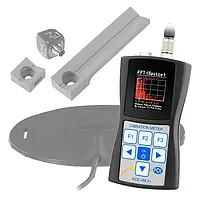
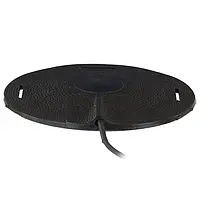
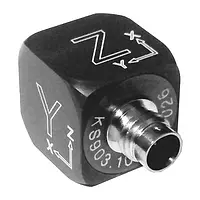
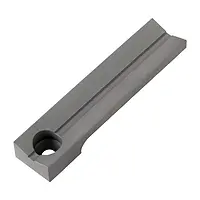
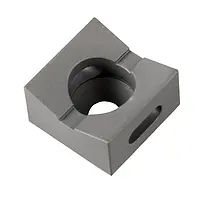

Condition Monitoring Vibration Meter / Measuring device for measuring human vibration at the workplace / Measurement of speed, acceleration and displacement / TEDS support / Memory for 10,000 measured values / USB interface / simple operation
The Condition Monitoring Vibration Meter is designed for measuring human vibration at the workplace. The Condition Monitoring Vibration Meter can calculate hand-arm vibration measurements according to ISO 5349 and whole-body vibration measurements according to ISO 2631. Each sensor consists of a triaxial Vibration Meter that captures acceleration, velocity, and displacement measurements. In addition to human vibration measurements, the Condition Monitoring Vibration Meter or Vibration Analyzer can measure the vibrations of machines. The Condition Monitoring Vibration Meter also supports TEDS, which means that it can detect and identify TEDS-capable sensors automatically. Overall, the device comes with 4 independent measuring channels. The measured data can be displayed as interval, running or maximum RMS (MTVV), as well as estimated vibration dose value (eVDV), vector sum, peak, and maximum peak. The acceleration can also be displayed as FTT with up to 125 lines. The internal flash memory of the Condition Monitoring Vibration Meter can store up to 10,000 measurements or up to 1,000 FTTs, each with date, time, and a comment. The measured data can also be transferred to a PC via the USB 2.0 interface.
| Measuring range | Sensor with 1 mV/(m/s²) | Sensor with 10 mV/(m/s²) |
| Acceleration | 1100 m/s² / 3609 ft/s² | 110 m/s² / 361 ft/s² |
| Velocity | 100 mm/s ... 10,000 mm/s 4.0 in/s ... 394.0 in/s (1 kHz/1 Hz) |
10 mm/s ... 1,000 mm/s 0.4 in/s ... 39.4 in/s (1 kHz/1 Hz) |
| Displacement (Peak) | 250 µm ... 15,000 µm 0.01 in ... 0.6 in (5 Hz/250 Hz) |
25 µm ... 1,500 µm 0.001 in ... 0.06 in (5 Hz/250 Hz) |
Display resolution (1 / 10 mV/(m/s²)) |
||
| Acceleration | 0.01 m/s² / 0.4 in/s² | |
| Velocity | 0.1 mm/s / 0.004 in/s | |
| Displacement | 1 µm / 4 x 10-5 in | |
Linearity range |
> 75 dB for ±6 % error |
|
| Noise | < 0.003 m/s² / 0.12 in/s² | |
| Inputs | 4 Low-Power-IEPE inputs; 0.7 mA / 17 V; TEDS support, IEEE1451.4, Template 25 | |
| Sensor sensibility | 0.8 - 120 mV/(m/s²) | |
| Display units human vibration (acceleration) |
Interval RMS vector sum max. running RMS (MTVV) vibration dose value (VDV) |
|
| Display units acceleration, velocity, displacement | running RMS maximum RMS vector sum peak value maximum peak value |
|
| Filters | Weighting filters: Wb, Wc, Wd, Wh, Wj, Wk, Wm | |
| Unweighted: 6.3 - 1259 Hz (H/A) / 0.4 - 100 Hz (G/K) | ||
| Acceleration: 0.1 - 2000 Hz / 1 - 1000 Hz | ||
| Velocity: 1 - 100 Hz / 2 - 1000 Hz / 10 - 1000 Hz | ||
| Displacement: 5 - 250 Hz | ||
| Frequency analysis (FFT) | 125 lines for X/Y/Z, peak spectrum of acceleration, 3 - 240 / 6 - 480 / 12 - 960 / 24 - 1920 Hz | |
| Data memory | Flash, 10,000 measurements, 1,000 FFts, each with date, time and comment | |
| Display | OLED, 128 x 160 pixels, coloured | |
| Interface | USB 2.0, full speed, CDC-mode (virtual COM port), via cable VM2x-USB | |
| Batteries | 3 x 1.5 V AAA batteries or accumulators (LR03 or HR03) | |
| Environmental conditions | -20° C ... +60° C / -4° F ... +140° F < 95 % RH |
|
| Approx. dimensions | 125 mm x 65 mm x 27 mm 4.9 in x 2.6 in x 1.1 in (without connectors) |
|
| Approx. weight | 140 g / 0.31 lbs | |